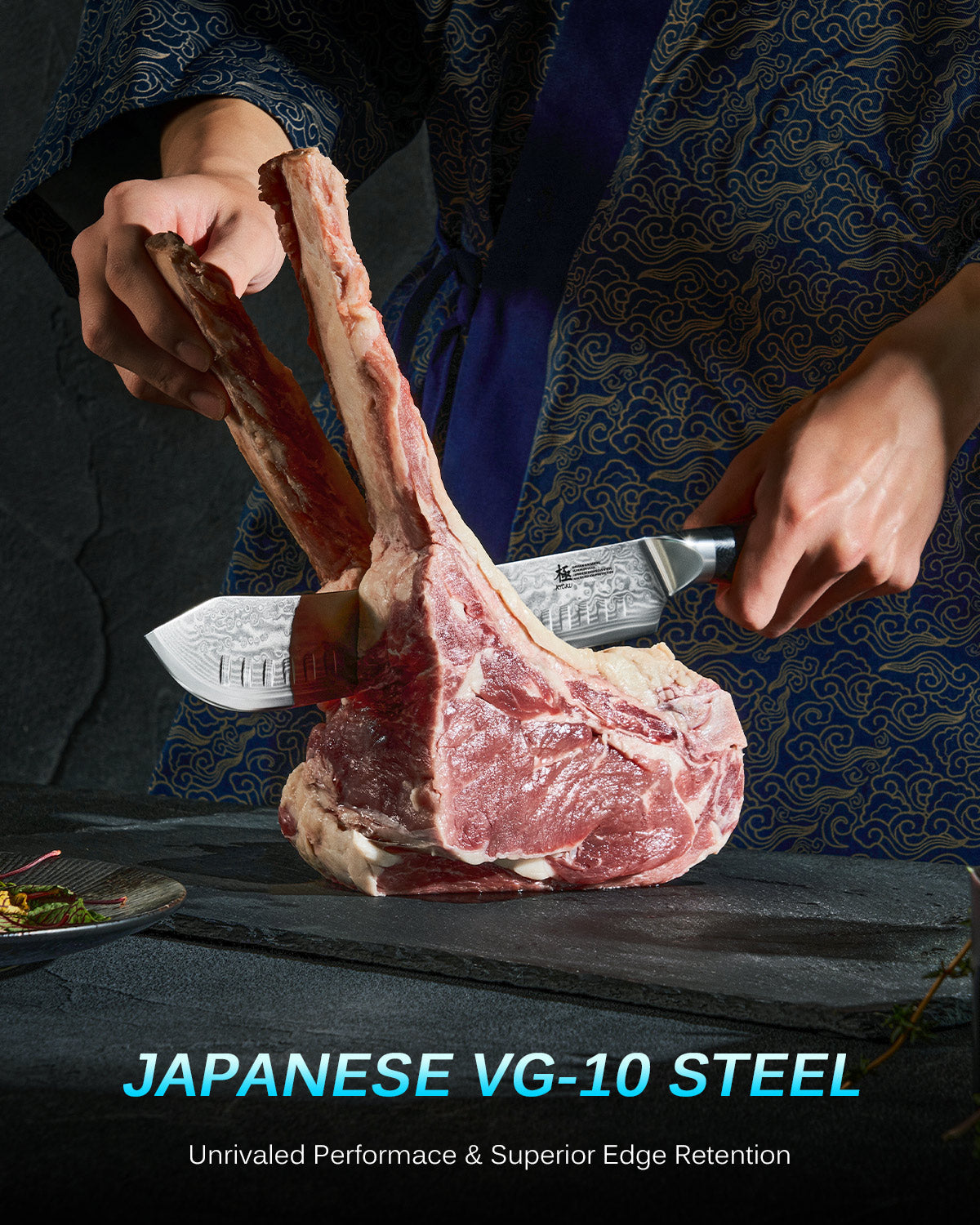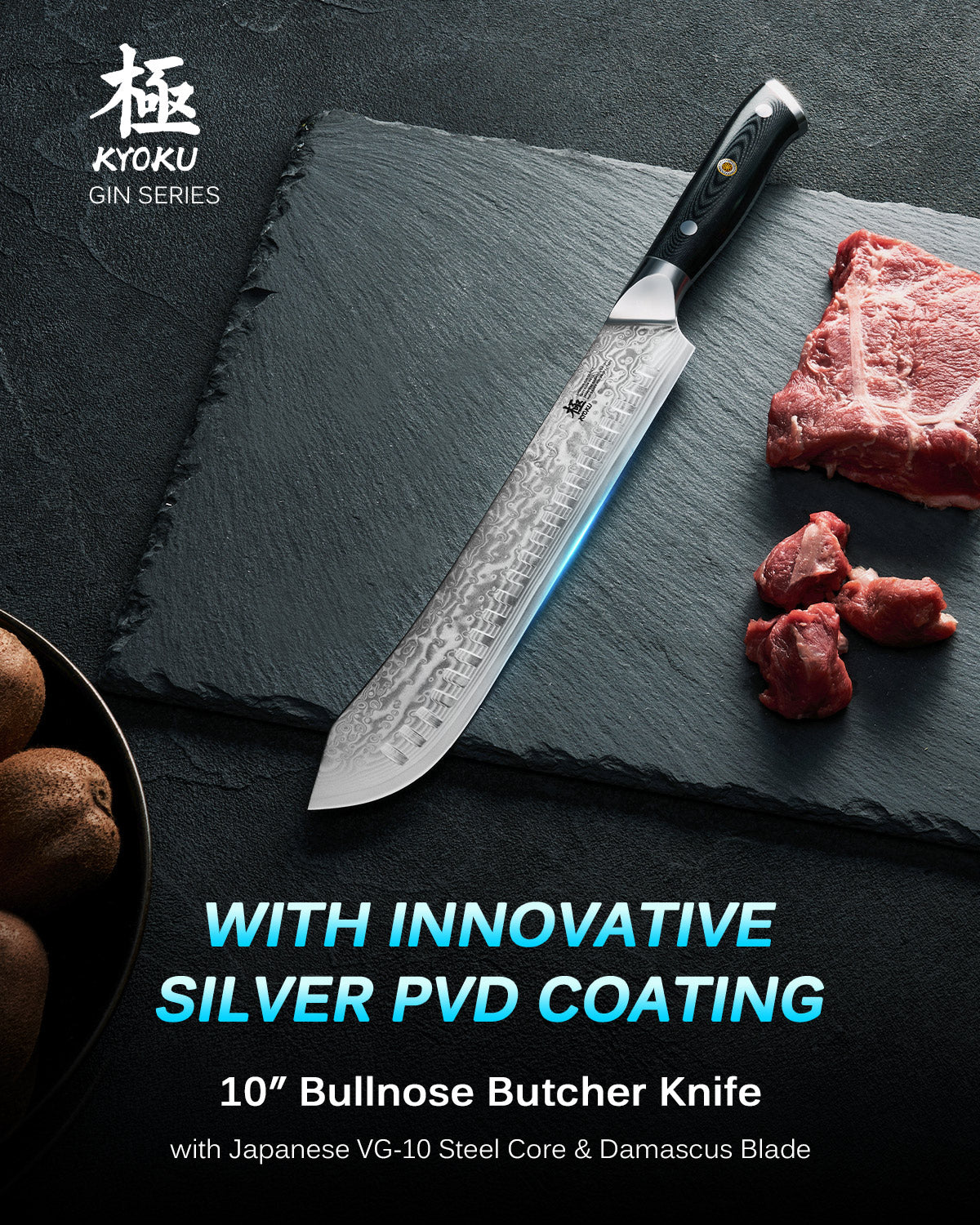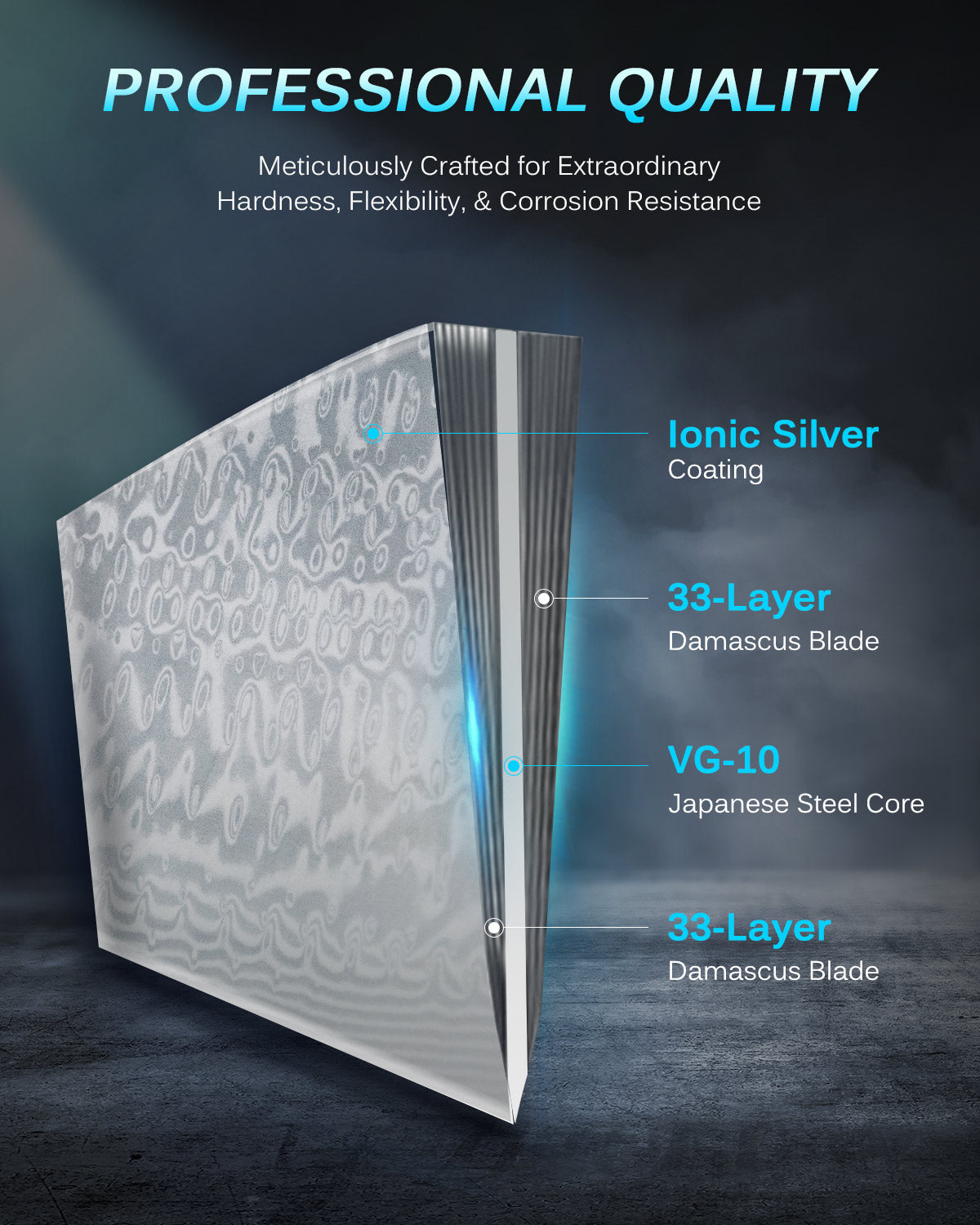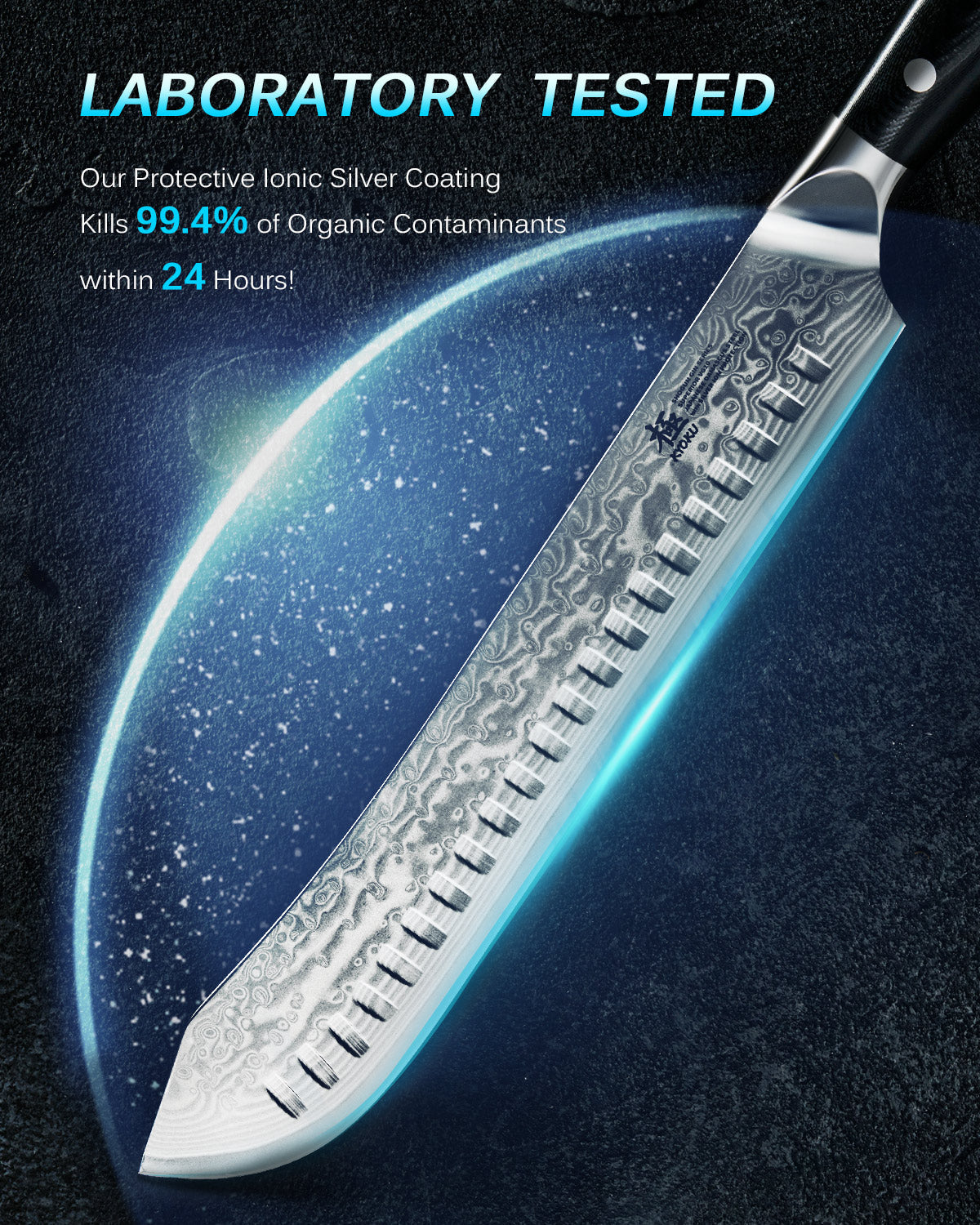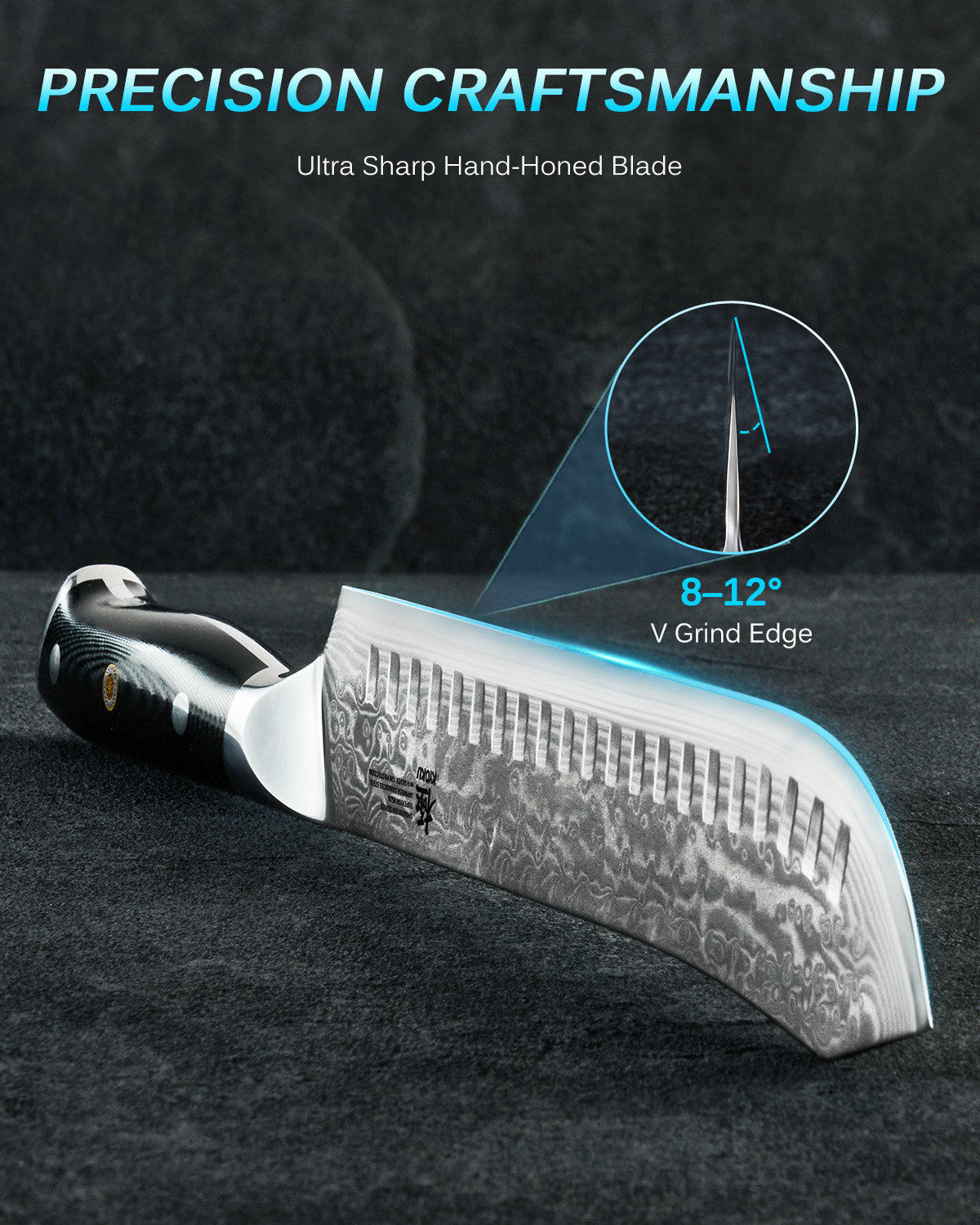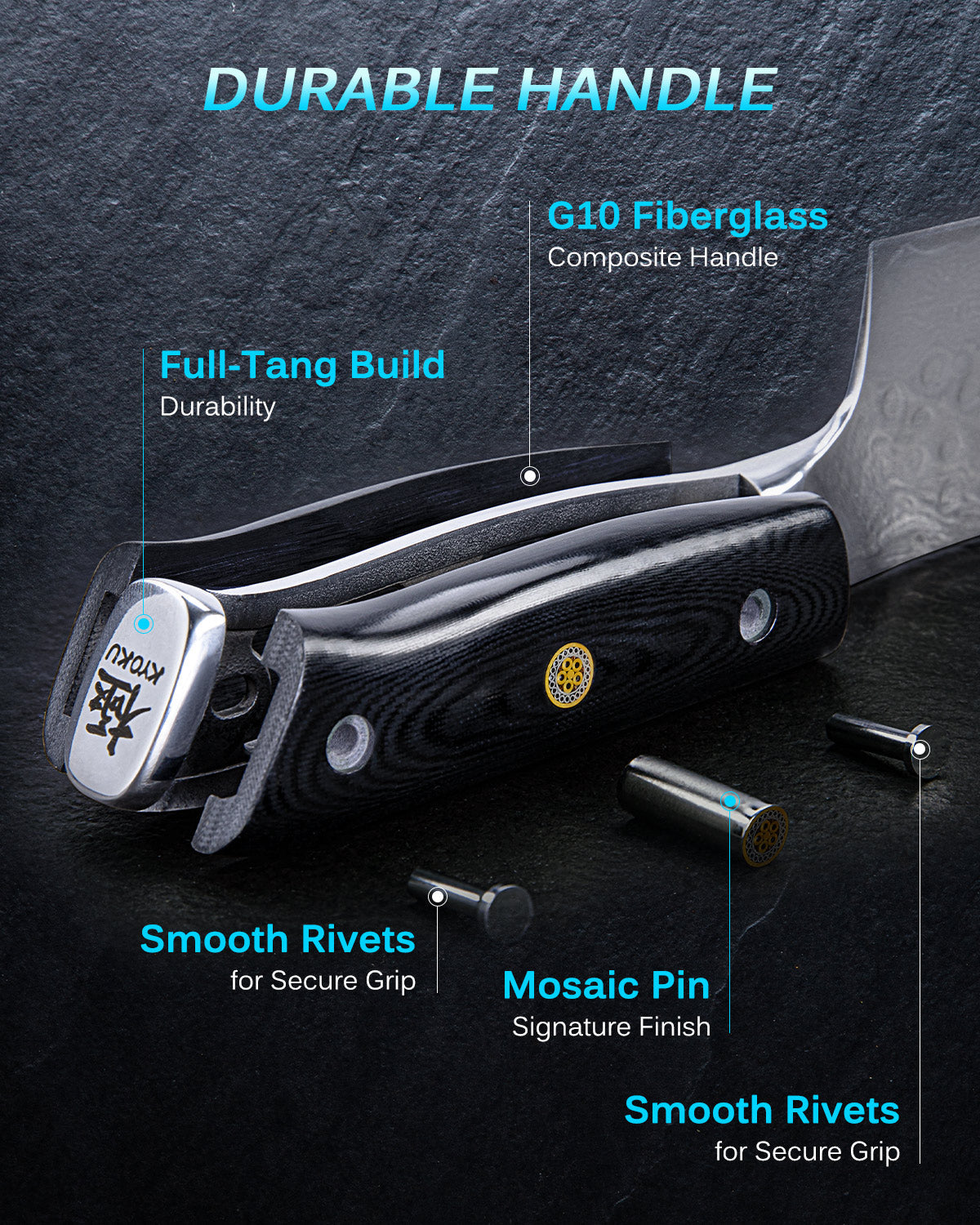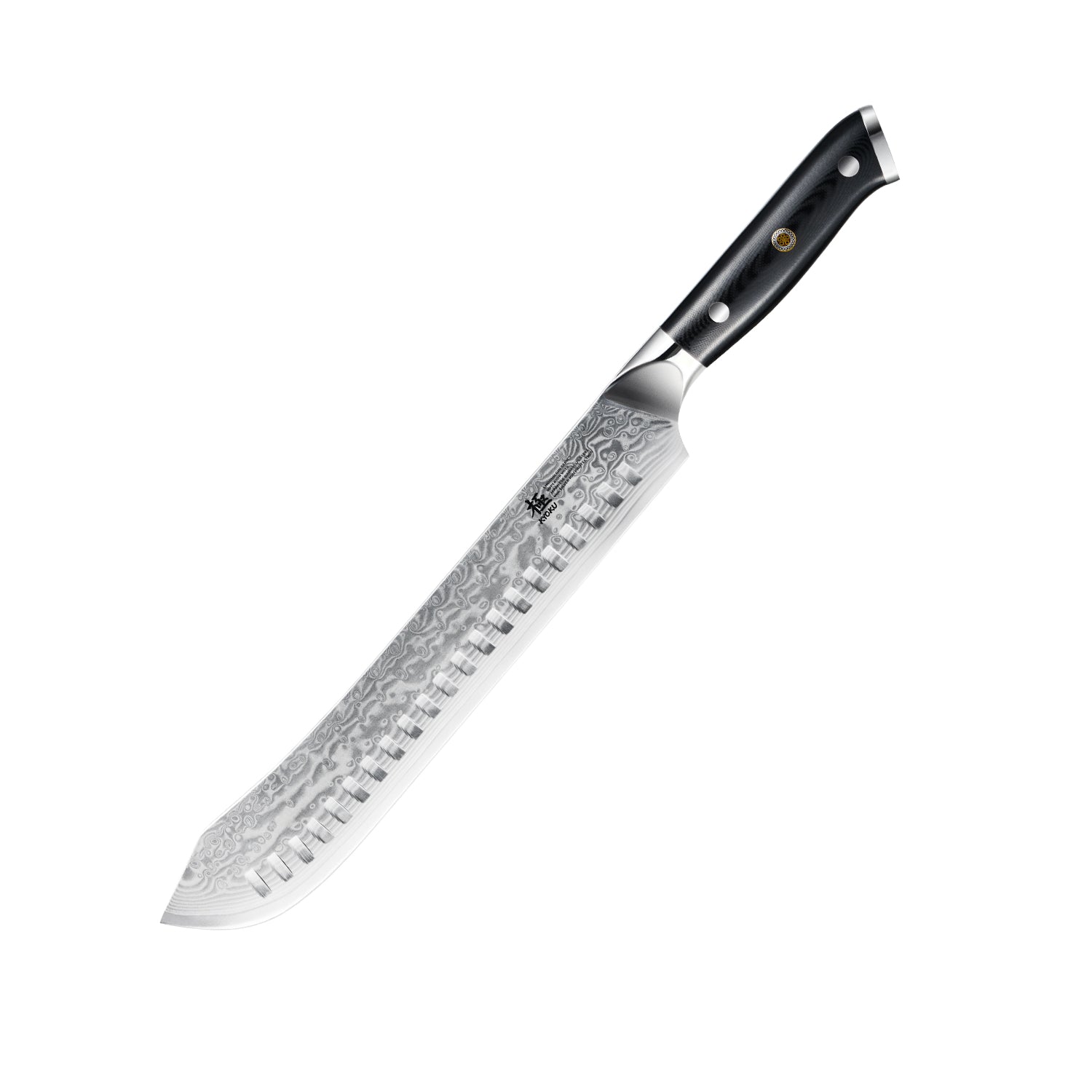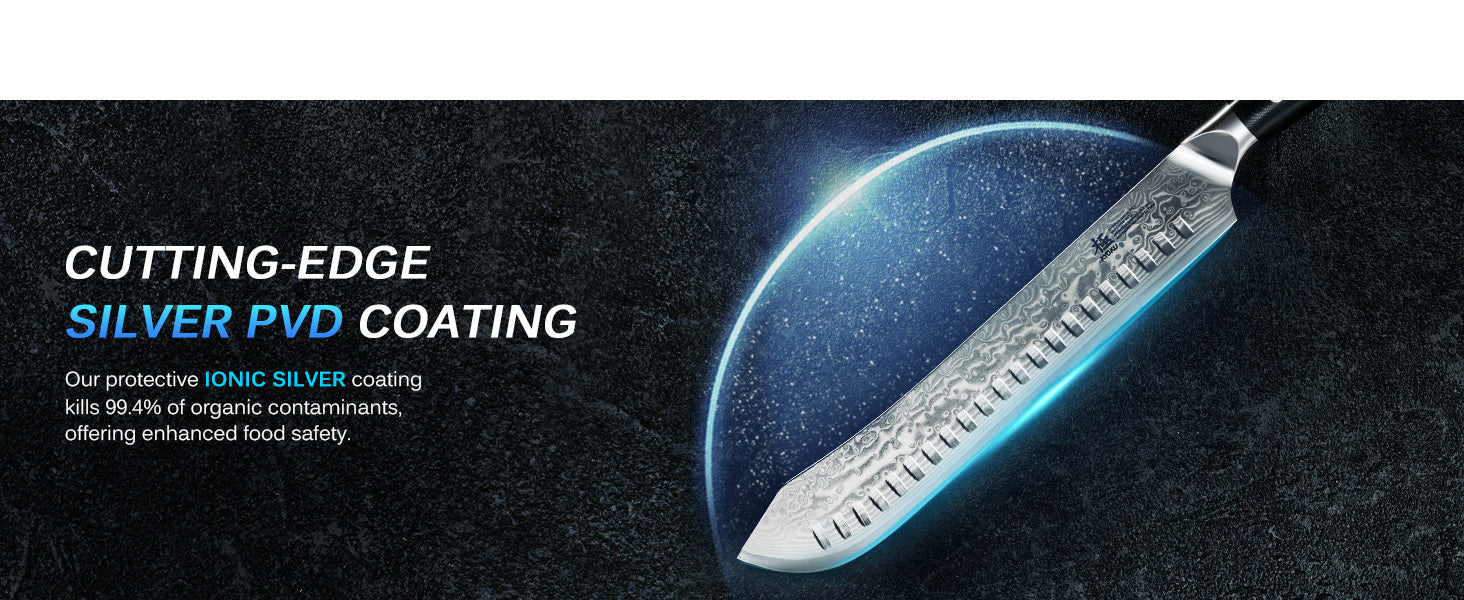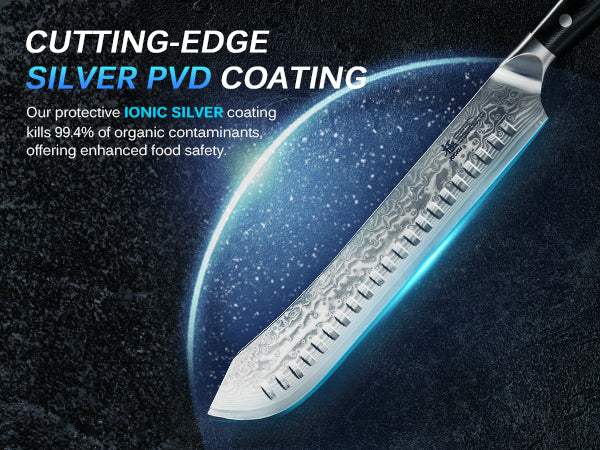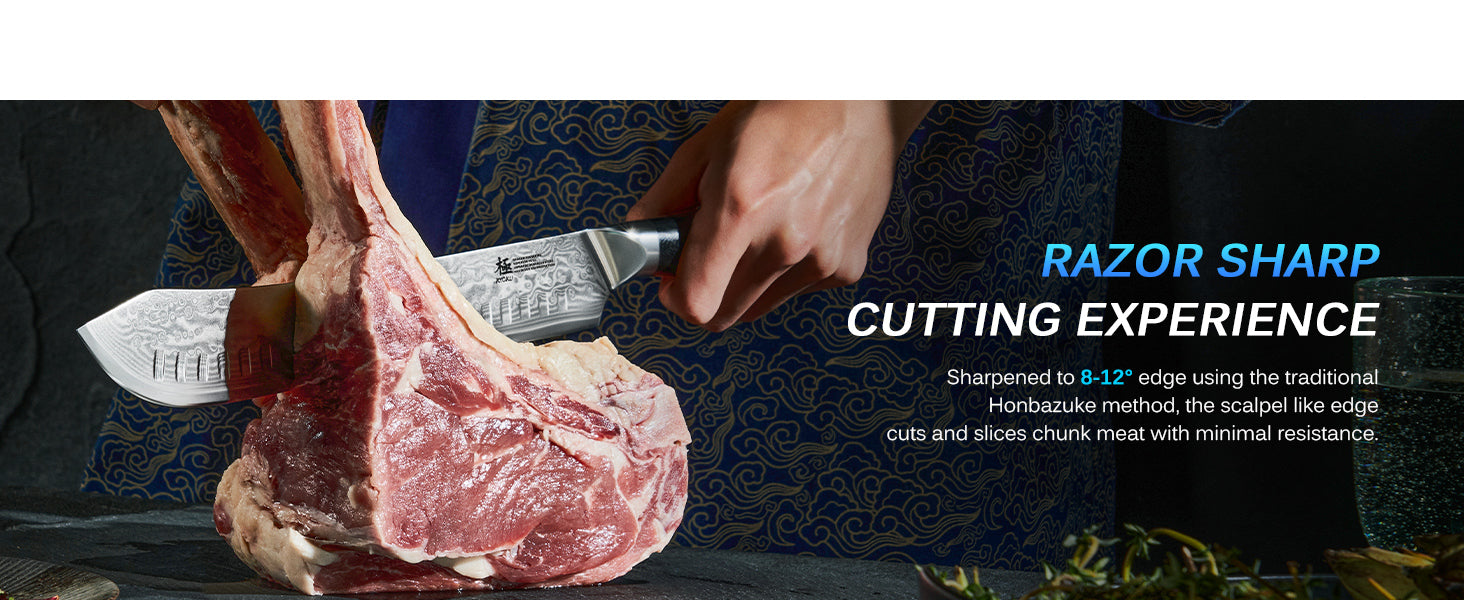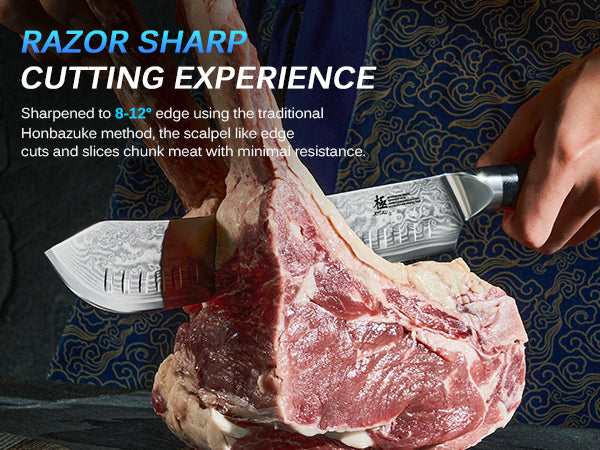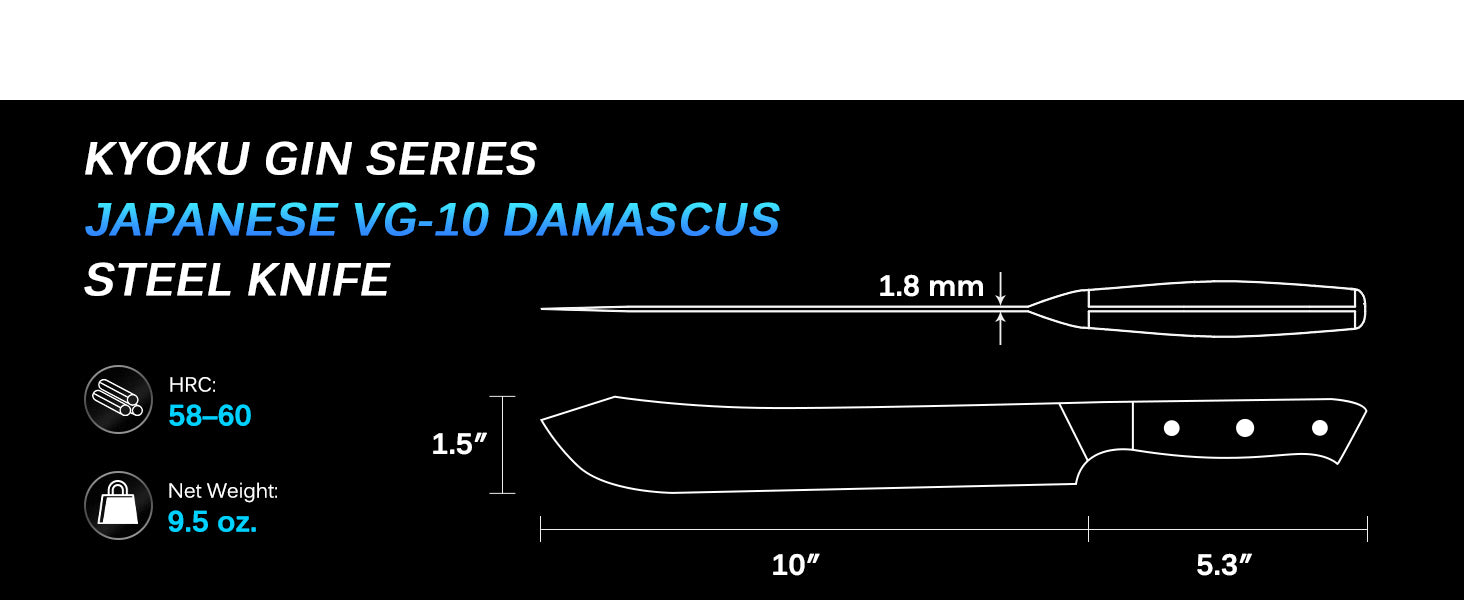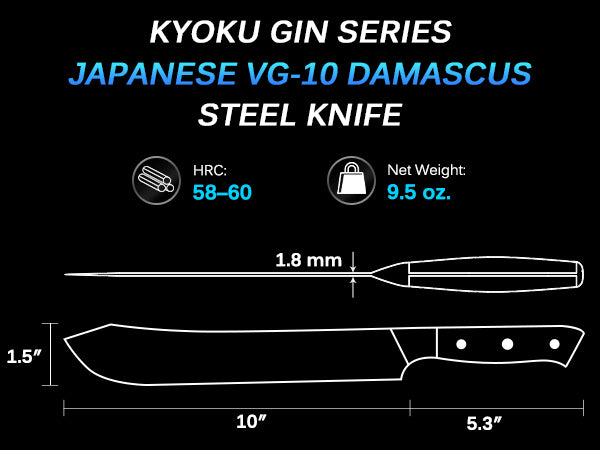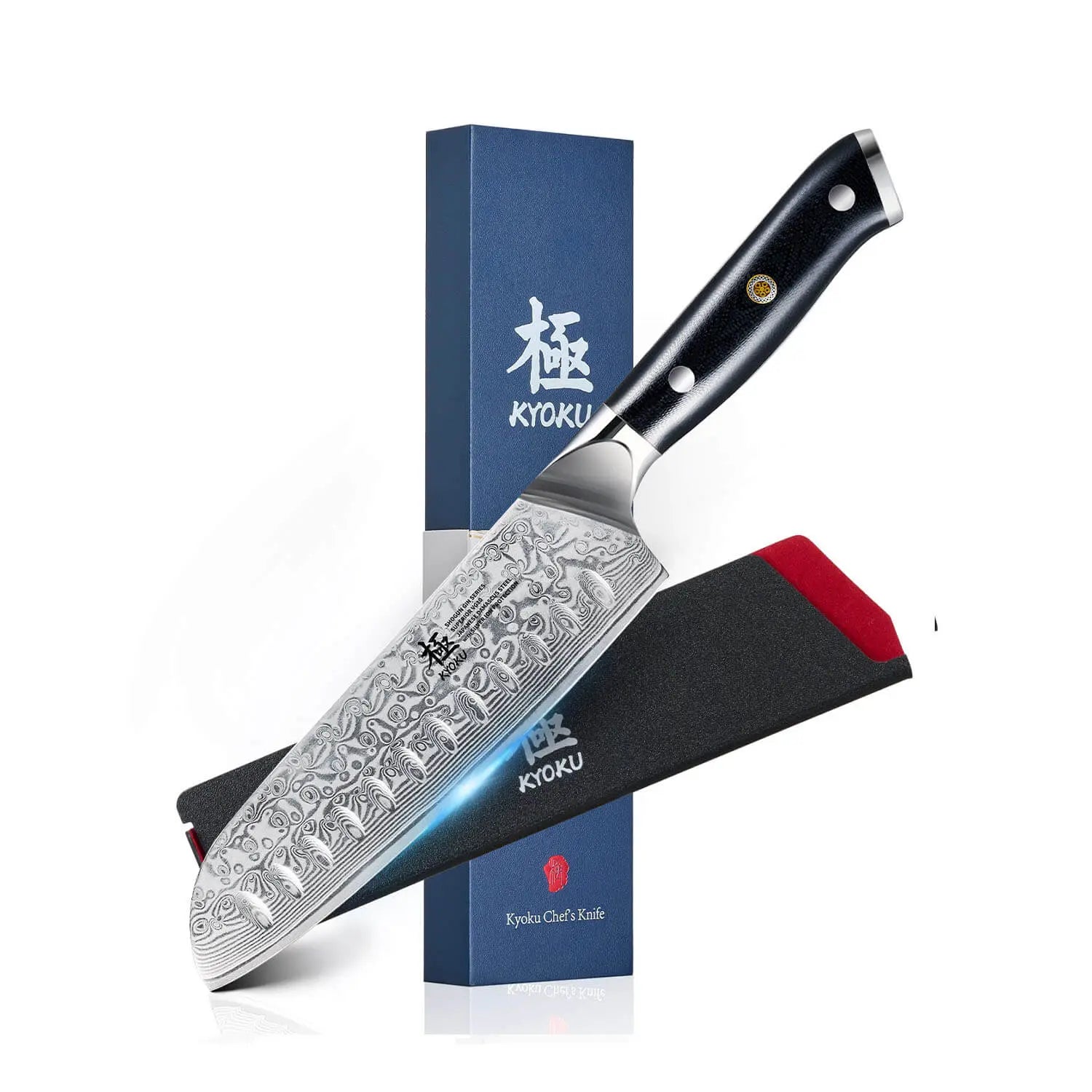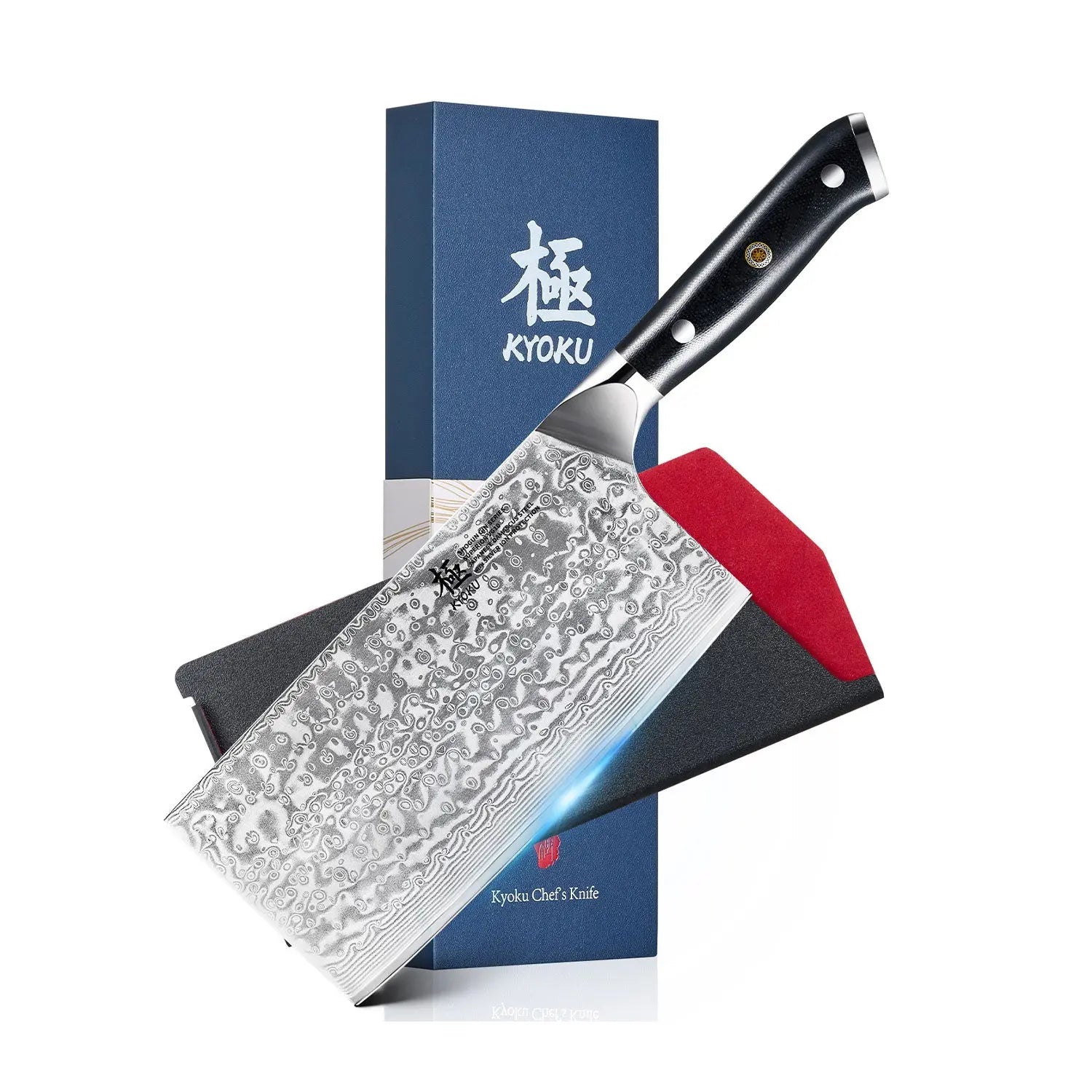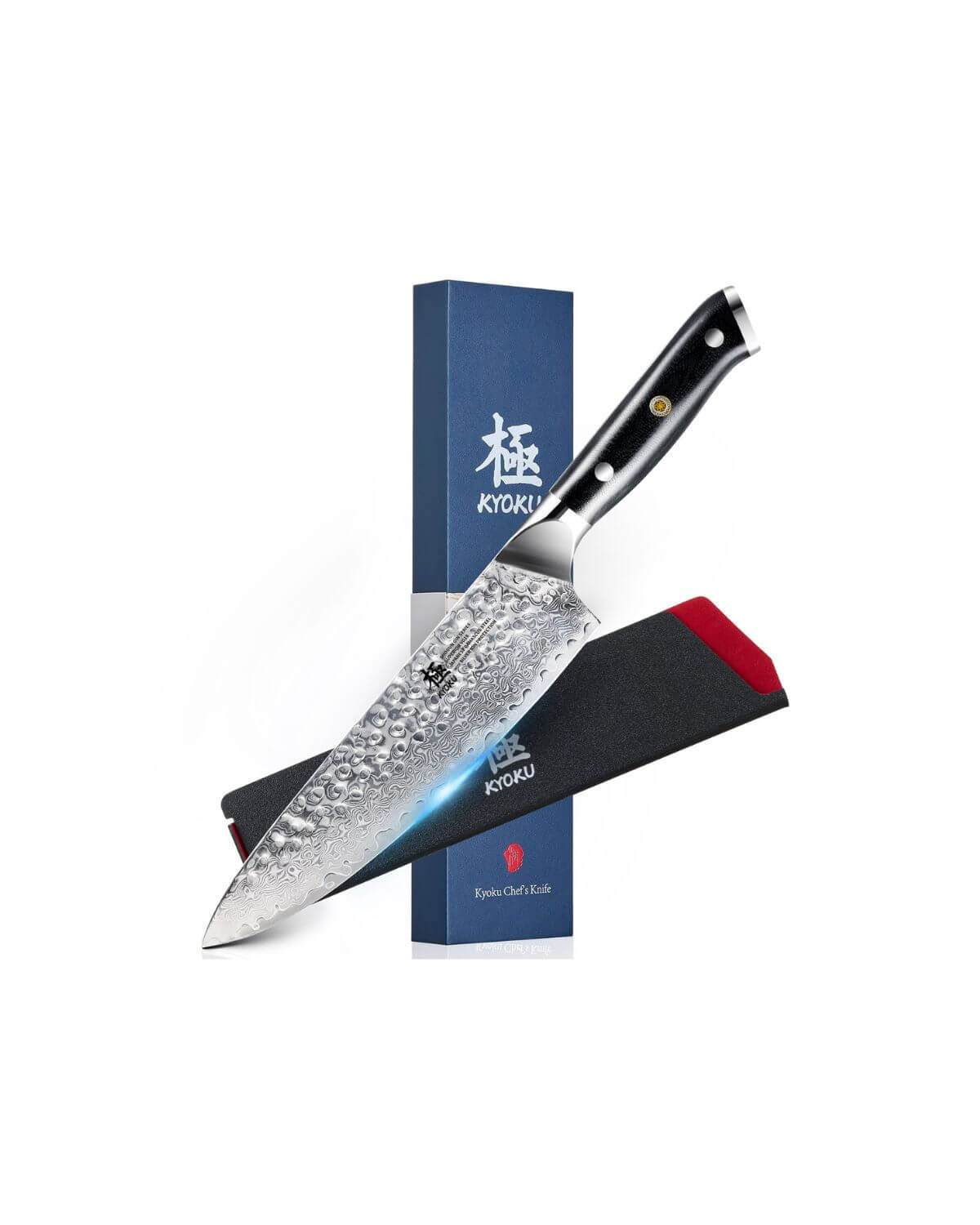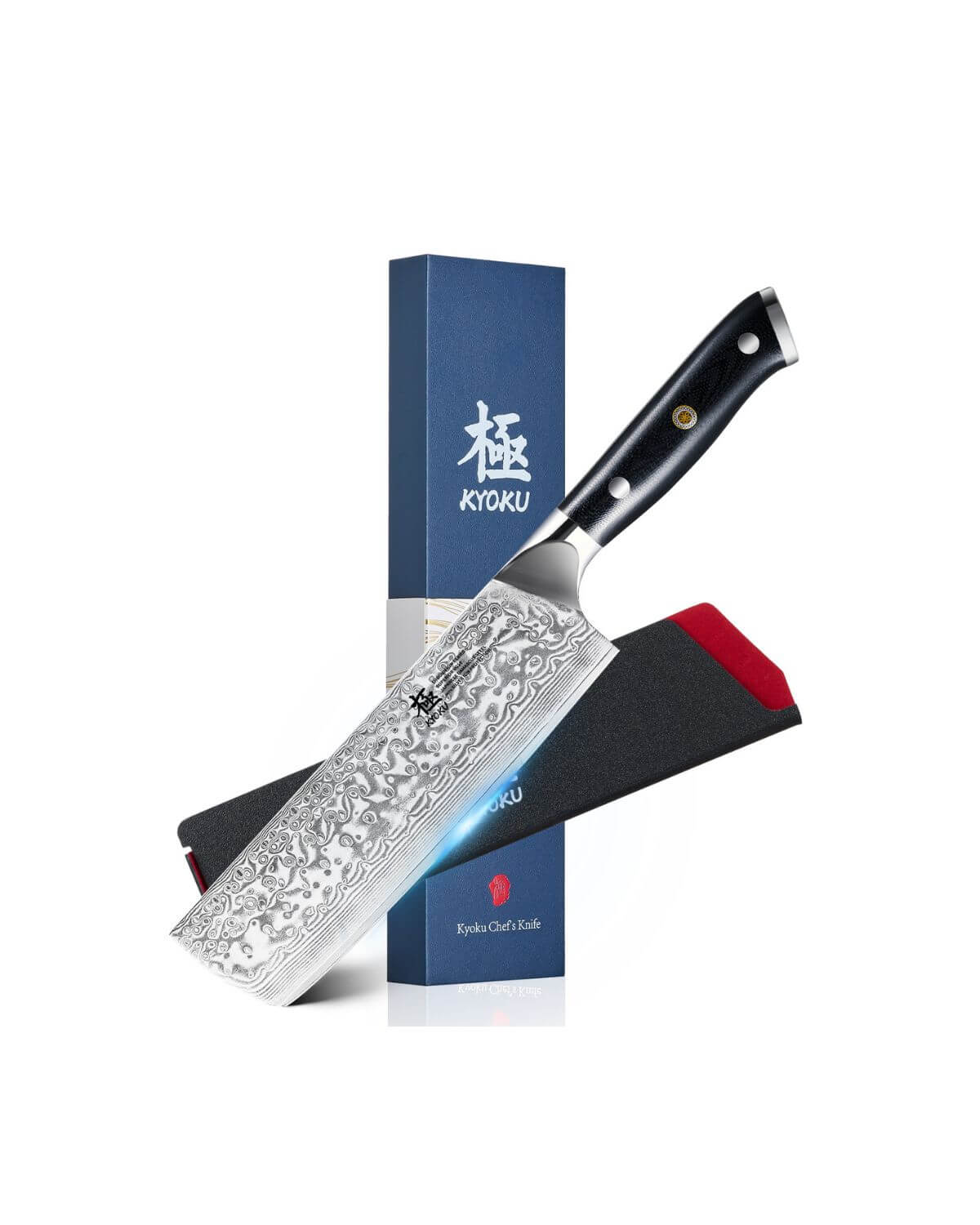10″ Bullnose Butcher Knife VG10 Steel with Silver-ion Coating | Gin Series
*Related Knife: 10" Bullnose Butcher Knife | Samurai Series
Description
Take your culinary and kitchen experience to the next level with this 10″ bullnose butcher knife from Kyoku’s new Gin series! A perfect fusion of tradition and technology, this 10-inch multipurpose bullnose knife is manufactured with cryogenically treated Japanese VG-10 steel to ensure outstanding durability and is innovatively coated with ionic silver for unrivaled hygienic performance.
Thanks to its scalpel-like edge, it can cut through chunky raw meat with minimal resistance. The bullnose tip of the knife is designed to prevent accidental punctures and tears in the meat with meticulously precise precision.
No detail is amiss, from the full tang construction to the 58-60 HRC Damascus steel blade, from the comfy fiberglass handle to the elegant mosaic pin. This professional grade butcher knife comes complete with its sheath and case to preserve and store it with care.
Enjoy this perfect meat knife for professional chefs and home cooks, from commercial kitchens to home kitchens, and add it to your collection today!
What is a butcher knife used for?
Butcher knives are designed for cutting meat, beef, pork, poultry, fish, and other meats. It is very easy to cut thick slices of meat straight, which is ideal for shredding, dividing, and portioning large pieces of meat. It is also suitable for cartilage, trimming beef, pork, poultry, fish, and other meats.
Specifications
- Blade Material:VG-10 Stainless Steel
- Handle Material: G-10 Fiberglass
- Rockwell Hardness: 58-60
- Blade Dimensions: 10 x 1.7 in. (25.4 x4.4 cm)
- Blade Thickness: 0.1 in. (1.8 mm)
- Edge Angle: 8–12°
- Overall Length: 15.2 in. (38.7 cm)
- Net Weight: 10.1 oz. (285 g)
- Warranty: Lifetime
Package List
- 1 x Damascus Bullnose Butcher Knife
- 1 x Sheath
- 1 x Case
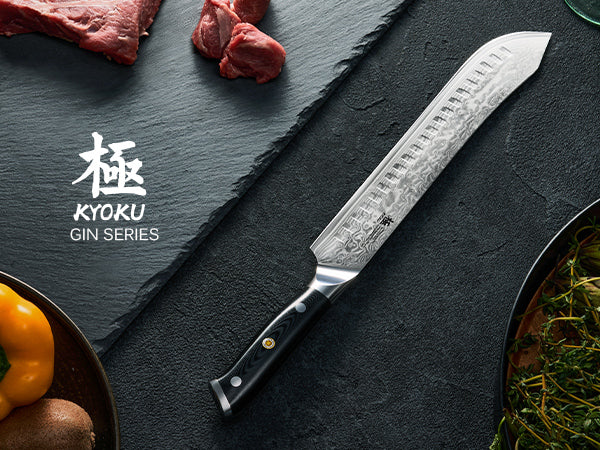
STAINLESS DAMASCUS STEEL
Manufactured with ultra-premium 67-layered stainless Damascus steel at HRC 58-60 hardness. The cobalt added steel outperforms AUS-10 steel in durability and is easier to sharpen, since cobalt enhances the other alloying elements.
Why GIN?
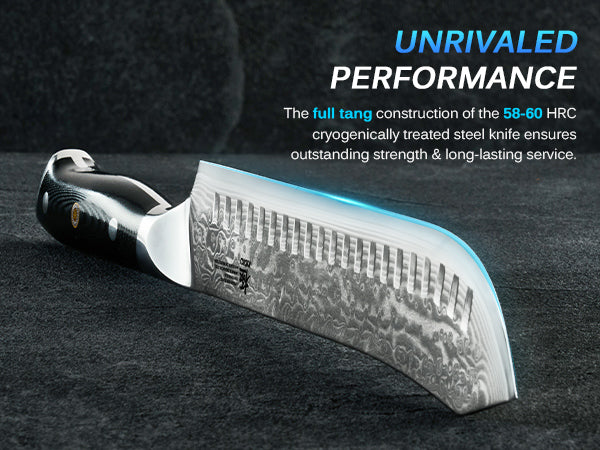
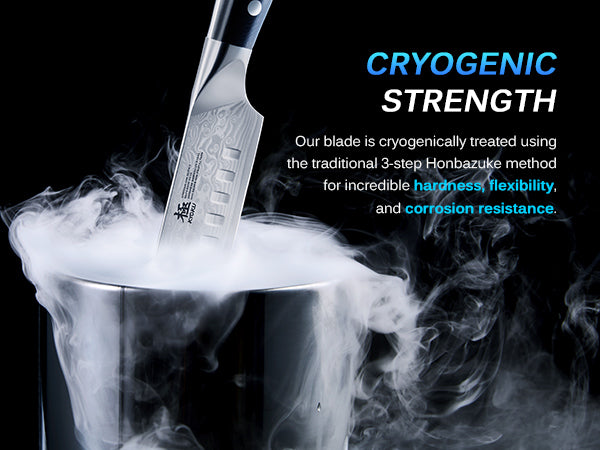
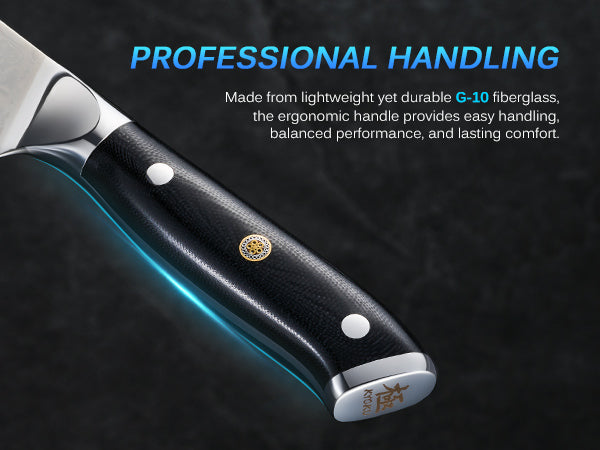
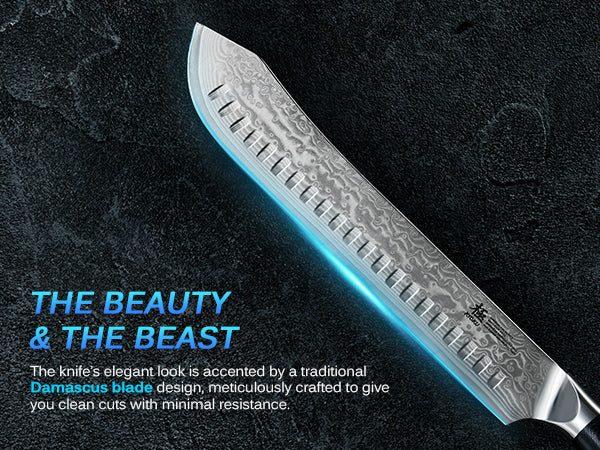
KYOKU SPIRITS
Inspired by tradition, but not bound by it.
Kyoku draws from the samurai's legacy, creating affordable high-end Japanese cutlery for chefs and home cooks worldwide with a passion for culinary creativity.
FAQS
What makes the Kyoku Shogun Gin Series Butcher Knife unique?
This butcher knife is a perfect fusion of tradition and technology, featuring cryogenically treated Japanese VG-10 steel and an innovative ionic silver coating for unrivaled hygienic performance.
What materials are used in the Shogun Gin Series Butcher Knife?
The knife is made with Japanese VG-10 steel and coated with ionic silver. It also has a full tang construction and a blade made of 58-60 HRC Damascus steel.
What kind of cutting tasks is the Shogun Gin Series Butcher Knife suitable for?
Butcher knives are designed for cutting meat, beef, pork, poultry, fish, and other meats. It is very easy to cut thick slices of meat straight, which is ideal for shredding, dividing, and portioning large pieces of meat. It is also suitable for cartilage, trimming beef, pork, poultry, fish, and other meats.
Does the Shogun Gin Series Butcher Knife come with accessories?
Yes, the knife comes complete with its own sheath and case for safe preservation and storage.
Blog posts
“Coarsely Chopped” and Why It Matters in Your Kitchen
This blog explains what “coarse chopped” means and how it differs from "finely chopped," and how you can use it in your kitchen? Explore coarsely chopped ingredients like coarse chopped cabbage, pecans and broccoli.
How to Cook Pumpkin for Dogs with 7 Easy Ways
Discover 7 easy ways to cook pumpkin for dogs, boosting their health with nutritious homemade meals. Learn expert tips and knife skills for perfect preparation.
5 Best Ways to Cut Vegetables
This blog explains five different ways to cut vegetables. From slicing to chopping to julienne cuts, it explains the five vegetable cutting methods to choose from, which yield different results in terms of look, taste, and cooking requirements.
For soups, for example, you want bigger vegetable pieces, so you go for chopping. For spring rolls, you’d want fine strips, so you must use the julienne cut. Then there are also slice cuts, mince cuts, and dice cuts, which give you different textures, cooking times, and presentations.


